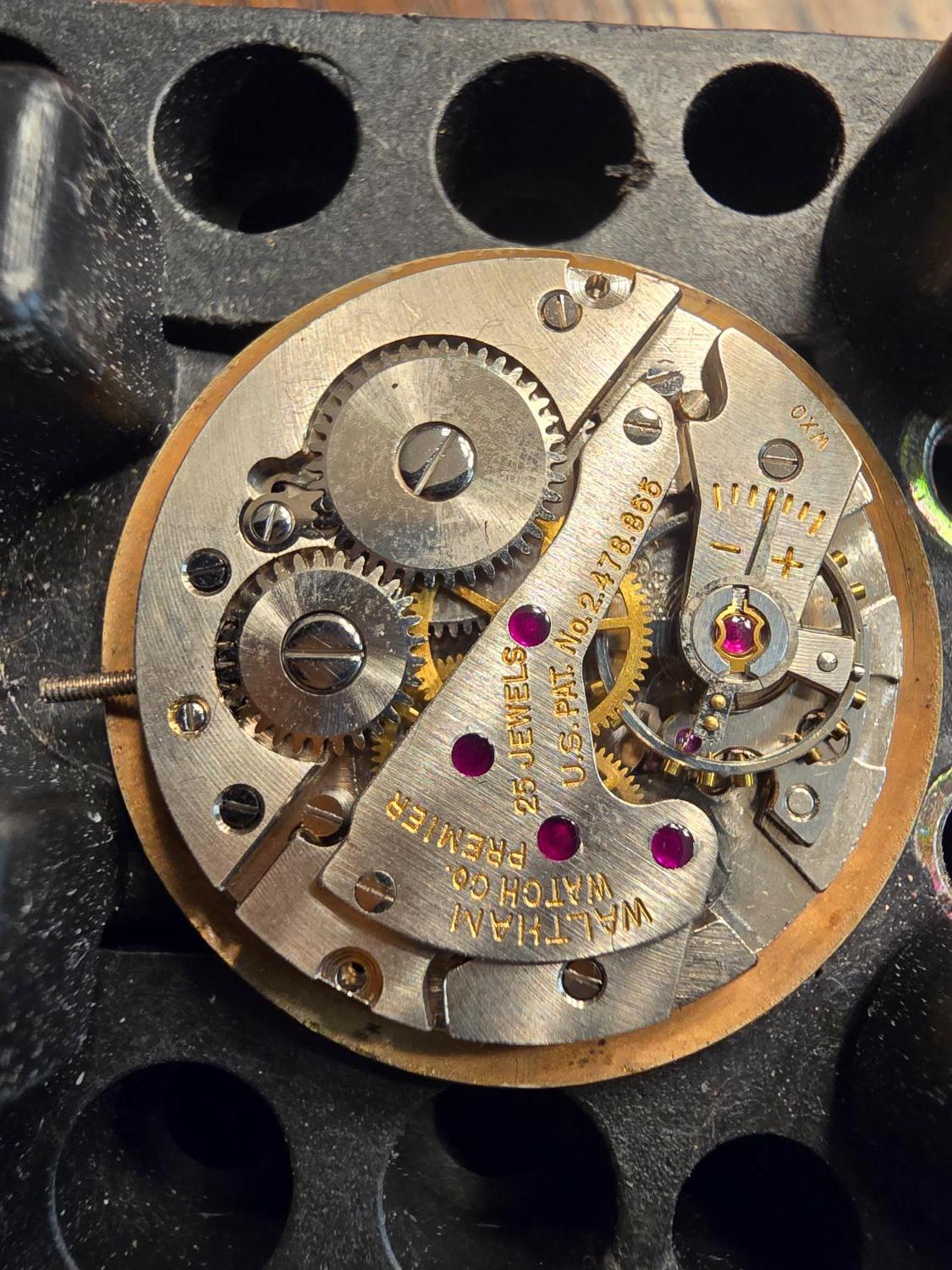Certina automatic movement (25-651) winds heavy after service
-
Recently Browsing
- No registered users viewing this page.
-
Topics
-
Posts
-
I bought a cheapo eBay watch which I wanted to try and “restore”. The movement is a Tissot 27B-21 which runs and looks very clean. The case and dial are a different matter! My main aim is to practice on the movement and try to get it running as well as I can. I’d like to end up with a usable watch at the end but I fear that the dial is a lost cause. It’s badly stained and scratched. One nice thing though is the old style Tissot logo which matches the logo on the inside of the case back. I know that cleaning dials is generally a non-starter for fear of making them worse; but it’s hard to imagine I could make this much worse. Does anyone have any suggestions as to how it might be worth trying to clean this? I was also wondering if I could go drastic and strip the lacquer completely, leaving the gold hour markers and logo intact. Sorry if this is heretical talk but, for me at least, the current dial is not usable. I can’t tell if someone has had a go at cleaning already between the 8 and 9? Thanks, Bill
-
By Neverenoughwatches · Posted
When the crystal starts to rotate you know that you are on your way. Always rotate it, just pulling it upwards rarely works unless the crystal is a slight fit. With each little nip on the clamp the rotation gets a bit easier. I have cranked down hard on the clamp sometimes and was convinced the crystal would shatter. Like most materials,you push them to their limits in one attempt and they are liable to break, but small increments of pressure allows them to acclimatise to a situation. -
The pictures are of the watch with the stem in setting position, and no, even at an angle, I haven't been able to discover anything. I hadn't considered that it may have been a split and now it's solid. I'm going to have to find some tiny pliers...
-
By luiazazrambo · Posted
I thought as much but when you first read it you have wild pictures in your head. 🙂 Could these be used for the new bit? What steel is this? What does the blue pivot steel mean? -
Hello community, I was hoping for some Cartier watch savant 🙂 I have this Cartier Tank Americaine that seems to be from the 90's ( serviced by Cartier/Wempe in 2001) Manual winding. Caliber ETA base 2412 17 jewels. 67X The young watchmaker at WEMPE in Germany was kind enough to actually go to the back and open it so we could get more info on it, and he took some photos. My quest for research was due to 3 reasons, well now 4. 1: Dial didn't have Swiss made/Swiss at the bottom and service dials would have had one of those ( can't remember which) On the German service receipt it is indicated that the dial was Refinished, by Wempe or Cartier which would explain the reason why it is absent. 2: The case back, Oh god knows how much I googled lol couldn't find ANY Cartier from the 80's 90's even 2000's or any year for that matter with the same case back, the little but which holds the movement. 3: Serial number, which is indicated on the case back as well as on the service receipt as " individual number" no info online, Cartier didn't find anything in their system nor Wempe. 4: the Ref number inscribed IN the case back is 63605. Again no info whatsoever on that REF. I was looking to sell it for my mother in law ( insert joke here lolll ) but I was confused as to why this one was different. Any info would be great ! I am sure someone here knows stuff that both Cartier and Wempe are missing. Cheers
-




Recommended Posts
Join the conversation
You can post now and register later. If you have an account, sign in now to post with your account.
Note: Your post will require moderator approval before it will be visible.